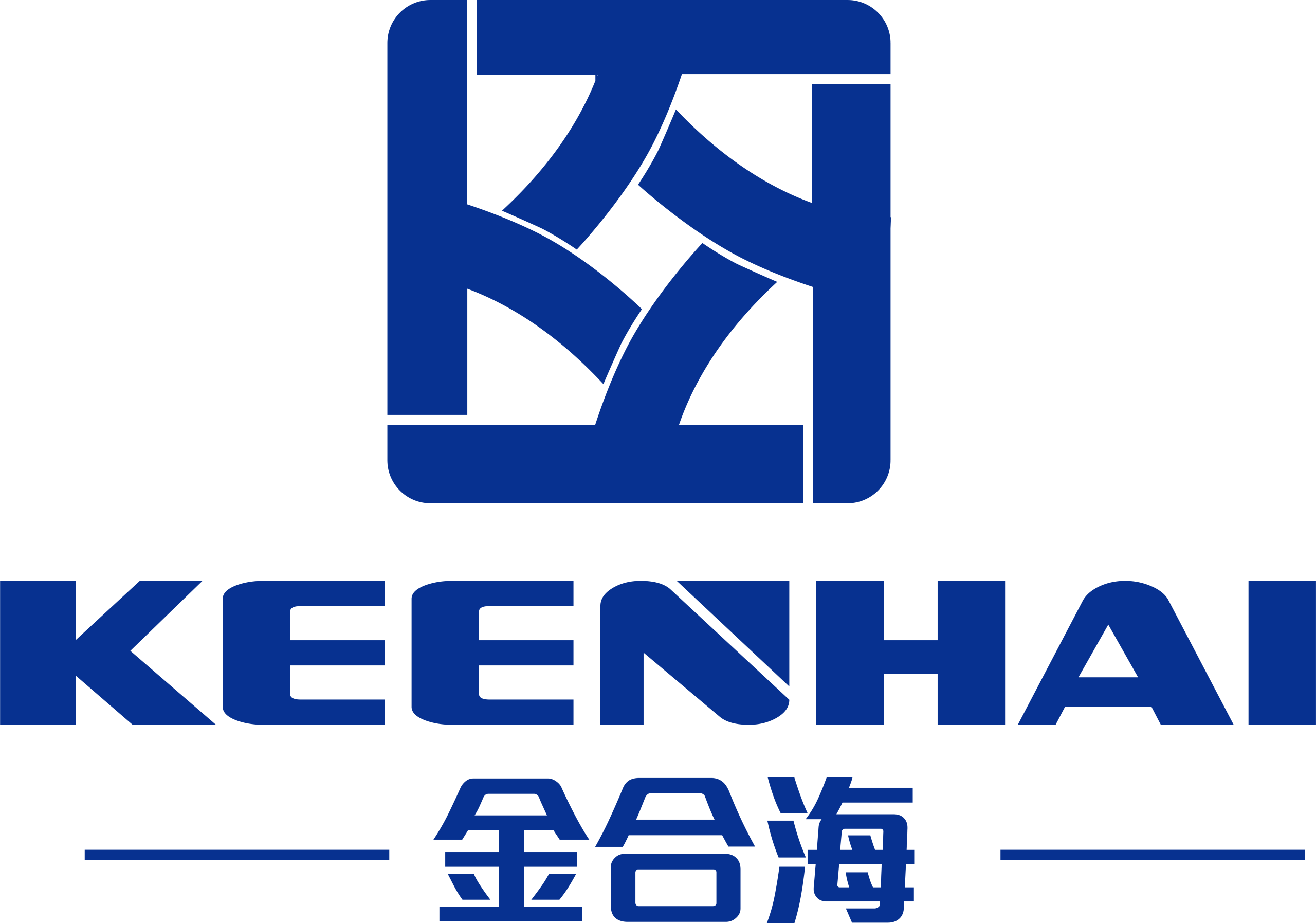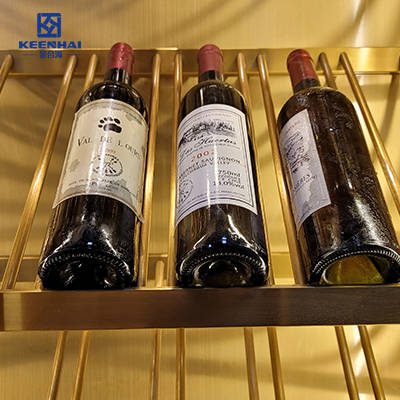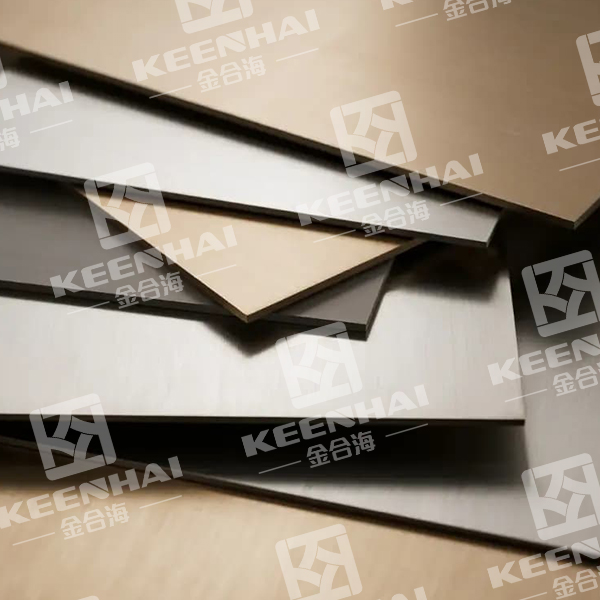Inox is stainless steel, an alloy mainly of iron and chromium (above 10.5%) that resists rust and corrosion. Its unique chromium oxide layer protects it, making inox ideal for durable, low-maintenance applications in construction, food processing, and marine environments.In its PVD stainless steel sheet form, inox gains additional scratch resistance and vibrant color options.
Definition of Inox
Meaning of the Term “Inox”
The word Inox comes from the French term “inoxydable”, meaning “non-oxidizing”, and in metallurgy it refers to a specific family of alloys known internationally as stainless steel. This terminology is widely used in Europe, particularly in France, Spain, and Italy, but in North America and many English-speaking countries, paslanmayan polad is the more common term.
Inox is not a marketing name—it is a technical designation that identifies steels containing a minimum of 10.5% chromium by mass. This chromium content is what enables the formation of a thin, transparent oxide layer that shields the metal from rust and staining. When the chromium content drops below this threshold, the material’s corrosion resistance decreases drastically, making it behave more like plain carbon steel.
Inox is available in multiple forms, including stainless steel sheet, coils, bars, and tubes. The sheet form is particularly popular in architecture, kitchen equipment, and industrial fabrication because it offers an ideal balance between machinability and corrosion resistance. The versatility of these products is why industries ranging from food processing to high-end architecture rely heavily on this material.
When buyers are evaluating materials for long-term use, they often compare inox against mild steel. Below is a direct comparison of the two based on key measurable properties:
| Property | Inox (Stainless Steel) | Mild Steel |
|---|---|---|
| Chromium Content | 10.5%–26% | <1% |
| Tensile Strength (MPa) | 515–1100 | 370–550 |
| Korroziyaya davamlılıq | Excellent in most environments | Poor, requires coating |
| Typical Service Life (years) | 20–50+ | 5–15 |
| Price per Ton (USD) | $1,500–$3,500 | $700–$1,200 |
The data clearly shows why inox is preferred for applications where durability, hygiene, and low maintenance are critical. The higher initial price is offset by a service life that can be two to four times longer, leading to lower total cost of ownership over time.
Origin of the Name and Common Synonyms
The use of the term Inox in metallurgy dates back to the early 20th century. French metallurgists adopted “inoxydable” to describe steel alloys that could withstand corrosion without the need for protective coatings. As the material gained global adoption, the shortened form “Inox” became a convenient industry shorthand, especially in product labeling and technical documents.
In different regions, you might encounter a variety of synonyms:
-
Paslanmayan Polad – Common in the US, UK, Canada, and Australia.
-
Inox Steel – Popular in Europe and parts of Asia.
-
Corrosion-Resistant Steel – Used in engineering specifications and procurement documents.
These terms all refer to the same base material, though the specific grade or finish may vary. For instance, a stainless steel metal plate may be described as “inox plate” in European catalogs, while an American manufacturer would simply call it “stainless plate.” Understanding these synonyms can be essential for international sourcing, as using the wrong term in a purchase order could lead to delays or incorrect material grades being shipped.
When working with suppliers like pvdstainlesssteel, specifying the exact grade (such as 304, 316, or duplex variants) alongside the term inox ensures both parties have a clear understanding of material expectations. This clarity helps avoid costly misunderstandings in production schedules and performance outcomes.
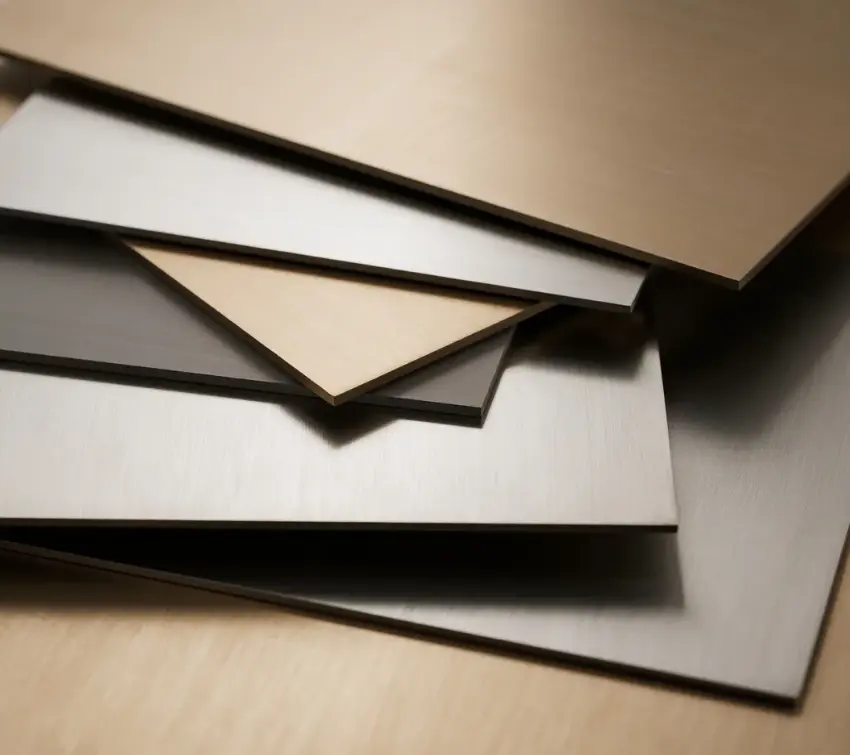
2. Chemical Composition
2.1 Primary Elements in Inox
Inox, commonly known as stainless steel, is primarily composed of iron (Fe), chromium (Cr), and varying amounts of nickel (Ni). The base of the alloy is iron, typically making up over 70% of the total weight, which provides structural strength and toughness. Chromium content usually ranges from 10.5% to 20%, a threshold required to achieve stainless properties by forming a thin, invisible oxide layer on the surface. Nickel, often present in grades like 304 və ya 316 paslanmayan polad, enhances ductility and improves corrosion resistance, especially in environments containing chlorides.
When used in high-performance applications, such as PVD stainless steel sheets, trace elements like molybdenum (Mo) or titanium (Ti) are introduced to improve specific properties. Molybdenum, for instance, significantly increases pitting resistance in saltwater exposure, making it a critical choice for marine and coastal projects.
A study by the International Stainless Steel Forum (ISSF) in 2024 showed that 316 stainless steel with 2–3% molybdenum lasts 35% longer in aggressive chloride-rich environments compared to grades without Mo. This highlights how even small changes in chemical composition can lead to measurable performance improvements.
2.2 Role of Chromium in Corrosion Resistance
Chromium plays the most critical role in making stainless steel resistant to corrosion. Once the chromium content exceeds 10.5%, the alloy develops a self-repairing passive layer of chromium oxide (Cr₂O₃). This microscopic film is only a few nanometers thick but acts as a robust barrier against oxygen and moisture penetration.
The effectiveness of chromium depends not only on its percentage but also on the distribution within the alloy. Uniform dispersion ensures that when the surface is scratched or damaged, the oxide layer regenerates within milliseconds, preventing rust from forming. This self-healing ability is a key reason why stainless steel is preferred in harsh industrial, architectural, and food-grade applications.
Research conducted by Nippon Steel & Sumitomo Metal Corporation confirmed that stainless steels containing 18% chromium maintain 99.8% surface integrity after 1,000 hours in a salt spray test, while alloys with less than 12% chromium showed visible corrosion within 200 hours.
2.3 Variations in Alloy Content
Different stainless steel grades have carefully adjusted chemical compositions to meet specific mechanical and environmental demands. For example, ferritic grades often contain 12–17% chromium with little to no nickel, which makes them cost-effective yet moderately corrosion-resistant. Austenitic grades like 304 və 316 include higher nickel content (8–10%) for improved formability and toughness, especially in low temperatures.
Below is a comparative breakdown of common stainless steel grades and their typical compositions:
| Grade | Chromium (Cr) | Nikel (Ni) | Molybdenum (Mo) | Typical Application |
|---|---|---|---|---|
| 304 | 18–20% | 8–10.5% | 0% | Kitchen equipment, architecture |
| 316 | 16–18% | 10–14% | 2–3% | Marine fittings, chemical processing |
| 430 | 16–18% | <0.5% | 0% | Appliances, automotive trim |
| Duplex 2205 | 21–23% | 4.5–6.5% | 2.5–3.5% | Offshore oil rigs, desalination plants |
Adjusting these elements allows manufacturers to fine-tune hardness, ductility, and corrosion resistance without compromising the balance between cost and performance. This flexibility is why stainless steel remains one of the most widely used alloys across industries.
3. Physical and Mechanical Properties
3.1 Strength and Durability
Inox stands out for its impressive strength-to-weight ratio, making it a reliable choice across numerous industries. Depending on the specific grade, stainless steel sheets and products exhibit tensile strengths ranging from 515 MPa to over 1,100 MPa, far exceeding typical mild steel’s 370–550 MPa. For example, 304-grade inox offers excellent strength balanced with ductility, allowing it to withstand mechanical stresses without cracking or deforming. This balance enables architects and engineers to design slimmer, lighter structures without compromising safety.
Durability comes from both the metal’s innate toughness and its resistance to wear and fatigue. Inox resists microfractures that commonly plague less resilient metals under cyclic loading. This is why many heavy-duty components, such as those found in industrial machinery and automotive parts, rely heavily on inox alloys. Moreover, the alloy maintains its mechanical integrity over long periods—service lifespans often exceed 25 years, particularly in controlled environments.
When selecting stainless steel products, thickness and surface finish also affect durability. For instance, a stainless steel metal plate with a thickness of 2 to 5 mm will typically endure higher loads and resist deformation compared to thinner sheets. Manufacturers tailor these specifications according to the intended application, ensuring optimized cost-efficiency without sacrificing performance.
3.2 Resistance to Corrosion and Staining
One of inox’s defining characteristics is its exceptional resistance to corrosion and staining. This property emerges from the chromium oxide passive layer that forms naturally on the surface. It shields the underlying metal from moisture, acids, and other corrosive agents. While inox resists rust better than most alloys, it’s not entirely impervious—certain harsh conditions can cause pitting or crevice corrosion, especially if contaminants accumulate.
For instance, in environments with high chloride concentrations, such as coastal areas or chemical plants, 316 stainless steel with molybdenum delivers superior protection. Studies reveal that it withstands salt spray exposure for over 1,000 hours without significant surface degradation, outperforming standard 304 grade by at least 30%.
Surface finish plays a critical role as well. Polished inox surfaces tend to repel dirt and stains more effectively, reducing maintenance time and cost. By contrast, brushed or matte finishes may trap contaminants, requiring more frequent cleaning. For applications demanding hygiene, such as food processing or medical instruments, these subtle differences matter immensely.
3.3 Heat and Temperature Tolerance
Inox alloys handle a wide temperature range without losing their core properties. Austenitic stainless steels, like grades 304 and 316, maintain structural integrity at temperatures from -196°C (-321°F) up to 870°C (1,600°F). This makes them invaluable in industries where both extreme cold and intense heat are common, such as cryogenics and power generation.
When exposed to temperatures above 870°C, oxidation rates increase, potentially degrading the protective chromium oxide layer. To mitigate this, special high-temperature stainless steels contain elements like silicon and aluminum that bolster oxidation resistance up to around 1,200°C (2,190°F).
Thermal expansion rates for inox typically range from 15 to 17 x 10⁻⁶ /°C, which is comparable to many construction materials, easing integration in composite structures. This consistency prevents warping or stress fractures during rapid temperature changes, ensuring long-term dimensional stability.
Industries such as aerospace, automotive, and energy rely on these heat tolerance properties to design components that endure demanding operating conditions without premature failure.
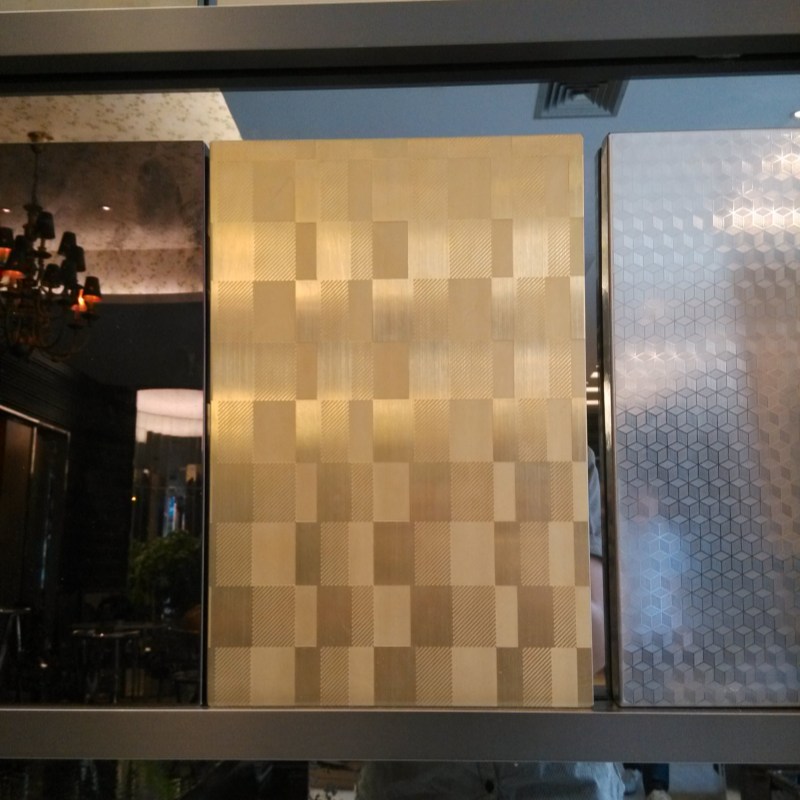
4. Main Types of Inox Steel
4.1 Austenitic Stainless Steels
Austenitic stainless steels represent the largest segment of inox alloys, accounting for roughly 70% of all stainless steel production worldwide. These steels contain 16% to 26% chromium və 6% to 22% nickel, with nickel stabilizing the face-centered cubic crystal structure. This unique crystal lattice gives austenitic steels exceptional toughness and ductility, even at cryogenic temperatures.
Common grades like 304 and 316 stainless steel fall into this category. Grade 304 is often called the “workhorse” of stainless steels because of its excellent corrosion resistance, good weldability, and balanced cost-performance ratio. The presence of nickel and chromium makes it resistant to oxidation and a wide range of chemicals. When exposed to chloride-rich environments, 316 grade, which contains an additional 2–3% molybdenum, outperforms 304 by resisting pitting and crevice corrosion.
Austenitic inox is non-magnetic and holds up well in food processing, chemical industries, and high-end architectural applications. Many of the stainless steel products used in these sectors rely on austenitic grades due to their superior corrosion resistance and aesthetic appeal.
4.2 Ferritic Stainless Steels
Ferritic inox steels typically contain 10.5% to 27% chromium but very little to no nickel, making them more affordable than austenitic types. Their body-centered cubic crystal structure makes them magnetic and generally less ductile, but still highly resistant to stress corrosion cracking.
Because ferritic steels lack nickel, they react differently to heat treatment and generally do not harden by quenching, which limits some mechanical properties. However, ferritic grades excel in oxidation resistance at elevated temperatures, commonly used in automotive exhaust systems, kitchen utensils, and architectural panels.
Grade 430 stainless steel is a popular ferritic inox, offering good corrosion resistance in mild environments and a cost-effective option for decorative trim and appliances. Its magnetic properties are often exploited in electrical applications and automotive components.
4.3 Martensitic Stainless Steels
Martensitic stainless steels differ by their ability to be heat treated to achieve high hardness and strength. They contain 12% to 17% chromium and moderate carbon content (up to 1.2%), which allows for a body-centered tetragonal crystal structure after quenching and tempering.
This class of inox is magnetic and finds wide use in cutlery, surgical instruments, and turbine blades, where mechanical strength and wear resistance take precedence over corrosion resistance. Although martensitic stainless steels resist corrosion less effectively than austenitic or ferritic types, their hardness can reach HRC 58–60 on the Rockwell scale, which rivals some tool steels.
Applications demanding sharp edges or high fatigue resistance benefit from martensitic inox’s unique combination of toughness and strength. For instance, knives made from martensitic steel maintain a sharp edge longer but require regular maintenance to avoid rust.
4.4 Duplex Stainless Steels
Duplex inox steels blend the advantages of austenitic and ferritic grades by combining approximately 20% chromium, 5–6% nickel, və 3% molybdenum. This hybrid microstructure delivers higher strength than either base type and improved resistance to chloride stress corrosion cracking.
Duplex stainless steels commonly serve demanding applications like offshore oil platforms, desalination plants, and chemical processing equipment due to their superior mechanical properties and durability. They provide up to twice the strength of austenitic steels, allowing designers to reduce material thickness and overall weight.
Their corrosion resistance ranks highly, especially in environments rich in chlorides and acids, making duplex grades a premium choice where both toughness and longevity are paramount. Companies like pvdstainlesssteel supply specialized duplex stainless steel sheets for these applications, often tailored to precise chemical and mechanical specifications.
| Stainless Steel Type | Chromium Content | Nickel Content | Key Properties | Typical Applications |
|---|---|---|---|---|
| Austenitic (e.g., 304, 316) | 16–26% | 6–22% | High corrosion resistance, non-magnetic, excellent ductility | Food processing, architecture, chemical industry |
| Ferritic (e.g., 430) | 10.5–27% | <0.5% | Magnetic, good oxidation resistance, moderate corrosion resistance | Automotive, appliances, decorative trim |
| Martensitic (e.g., 410, 420) | 12–17% | <1% | Heat-treatable, high hardness and strength, magnetic | Cutlery, surgical instruments, turbine blades |
| Duplex (e.g., 2205) | 20–23% | 4.5–6.5% | High strength, excellent corrosion resistance, chloride resistant | Offshore structures, chemical plants, desalination |
To explore more about stainless steel grades, finishes, and real-world applications, please visit the complete resource library at pvdstainlesssteel.com.
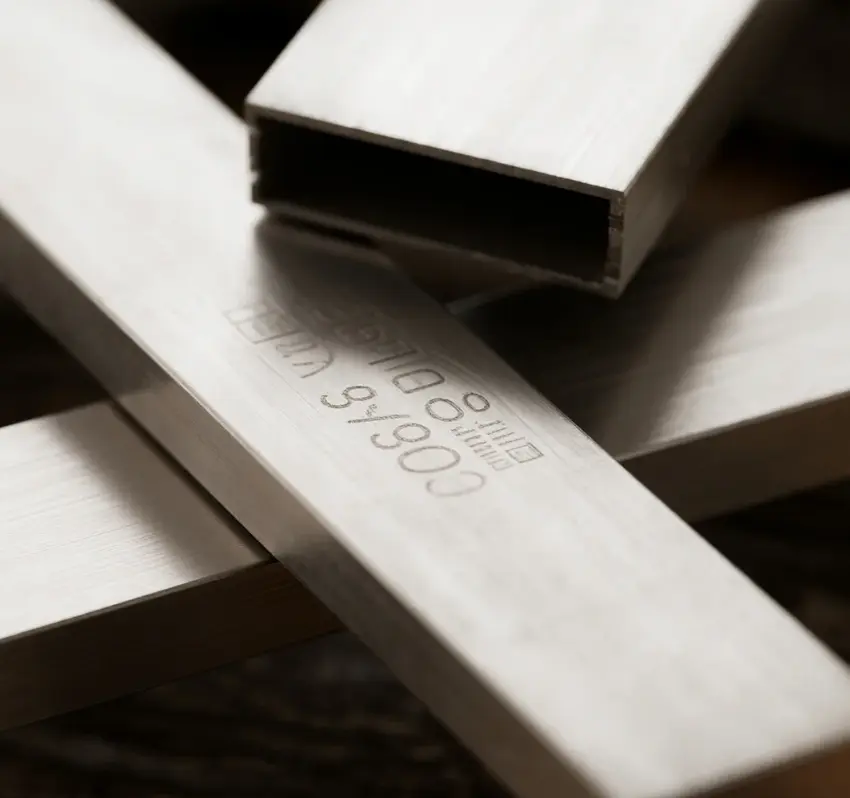
5. Common Applications
5.1 Kitchenware and Food Industry Equipment
The material is inox stainless steel in countless kitchen tools and food processing equipment due to its unmatched corrosion resistance and hygienic properties. Inox grades like 304 and 316 resist acids, salts, and frequent washing, making them ideal for cutting boards, sinks, cookware, and commercial food preparation surfaces. Their ability to withstand repeated sterilization without degradation helps food manufacturers comply with strict health regulations.
Stainless steel sheets and metal plates fabricated from inox allow manufacturers to create durable, easy-to-clean surfaces that prevent bacterial buildup. The material is inox’s smooth, non-porous finish also ensures minimal flavor transfer, making it preferred by chefs and food engineers worldwide.
5.2 Construction and Architectural Uses
Inox’s strength and aesthetic appeal make the material inox a staple in modern construction and architectural design. Stainless steel metal plates and sheets are frequently used in building facades, roofing, and structural components, providing long-lasting protection against weather and pollution. The alloy’s resistance to corrosion allows it to maintain its shine and integrity for decades without costly maintenance.
Architects choose inox to combine durability with design flexibility — it can be polished to a mirror finish or brushed for a matte look, fitting various visual requirements. The material is inox also resists staining and graffiti better than many alternative metals, helping maintain building appearance in urban environments.
5.3 Industrial and Marine Environments
Heavy industry and marine sectors rely heavily on the material inox for its superior resistance to harsh chemicals and saline conditions. Offshore oil rigs, desalination plants, and chemical processing facilities utilize duplex and austenitic inox grades to withstand corrosive elements that would rapidly degrade standard steel.
In these demanding settings, the material is inox not only extends equipment lifespan but also reduces downtime and maintenance costs. Its performance in chloride-rich environments is well documented; for example, duplex stainless steel can offer twice the strength of common inox grades, allowing engineers to design lighter, more efficient structures.
Learn how PVD coating takes stainless steel to the next level: What is a PVD stainless steel sheet?
